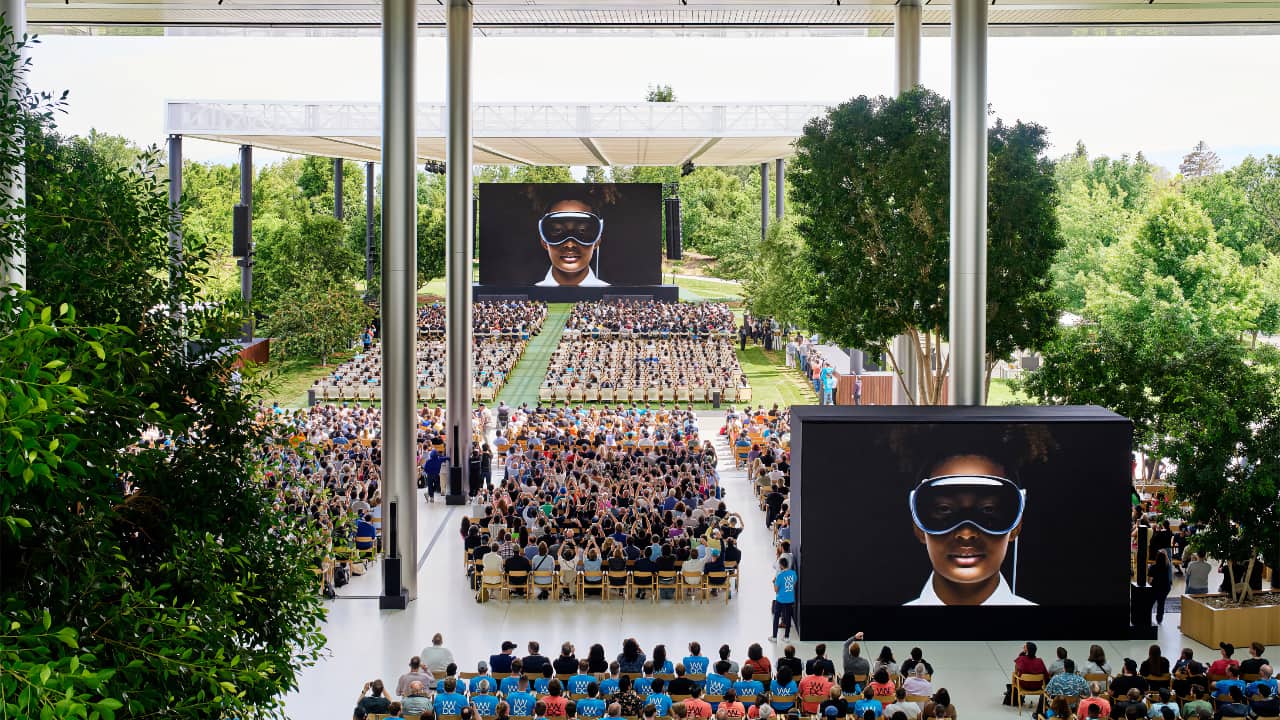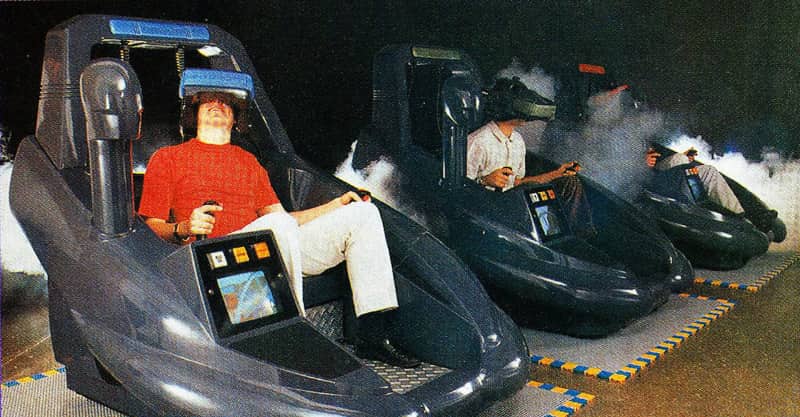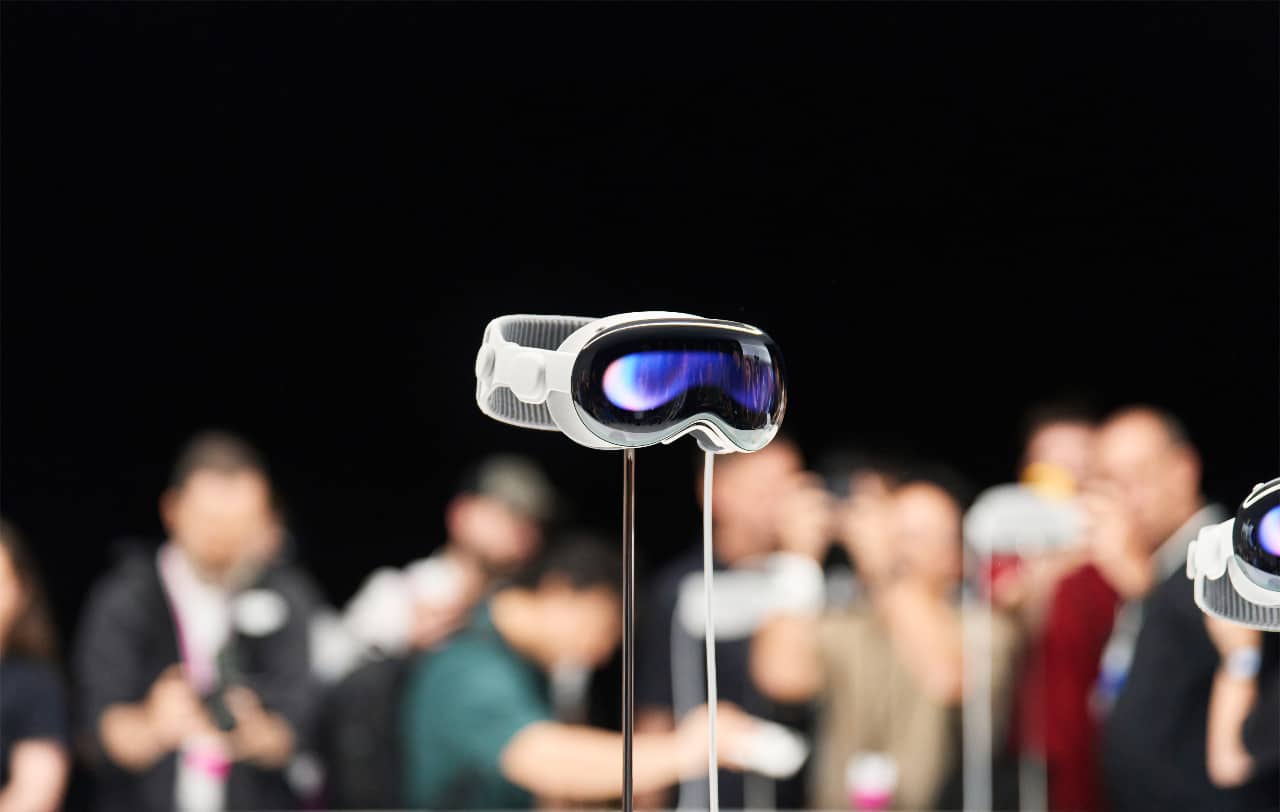
Stereo 3D, Google Glass, VR more than once… evidence so far suggests that wearables from simple glasses to immersive headsets are a difficult sell for tech companies. Roland Denning on whether Apple’s Vision Pro is genius or hubris.
We’ve all seen the promo and gasped at the price. The technology is undeniably impressive, but there is something strangely unconvincing about the promos – is this because this technology is so radical that it takes a massive leap of imagination to grasp it? Or is Apple still struggling to convince us we actually need this new tech?
Let’s not underestimate the technology – not only is it a viewing device with twin 4K screens, it has a 3D Lidar scanning camera, a ray tracing spatial audio system, and a high powered computer with a gesture and eye driven interface; 12 cameras, 5 sensors, 6 microphones. That $3500 price tag now seem like a bargain. And this is the sort of stuff that Apple does extraordinarily well.
But fundamentally, this is an VR/AR device. The virtual reality revolution has been ‘just around the corner’ for the last three decades. As far back as the early 1990’s a UK company called Virtuality launched a VR pod, aimed primarily at amusement arcades using goggles equipped with two 276 x 372 pixels screens, driven by a Commodore Amiga 3000 at a cost of £25,000 a unit. It wasn’t a huge success.

Cutting edge VR, 1990s style
Many say the problem is that we are just waiting for the technology to get light enough, the resolution to be high enough, the processing fast enough – when all that is place, the revolution is going to happen. Maybe. Certainly in terms of technological prowess, Apple seem to have achieved it, although the headset itself still needs a separate power pack and makes you look a little like a robot from a 50s sci-fi movie. Let’s look at the issue another way.
Sci-fi bleeding into real life
The founder of the goggle based VR concept as we know it today was Jaron Lanier who set up VPL research in the mid 1980s. This was also the time that William Gibson’s novel Neuromancer came out. It was Gibson who coined the term cyberspace and I believe a lot of the hype around VR emerged from sci-fi literature rather than science. It's worth remembering that the notion of a totally immersive, photo-realistic 3D universe where multiple participants can not only perceive but instantly modify this shared universe remains a sci-fi fantasy.
But the desire for an immersive movie experience has been around from the beginning of movies, since Abel Gance created the three screen Polyvision for Napoleon in 1924.

Abel Gance's three screen Polyvision system
Cinerama in the 1950s attempted to wrap a screen around us, which was taken to its logical conclusion with Circlorama in the 1960s. 3D movies are re-invented then fade away every decade since the 1950s. Are we still waiting for the technology to be refined, or, as I wrote before, perhaps we never really wanted 3D anyway?
Maybe we don’t want to be immersed
Not always, anyway. Most people’s first reaction to a VR experience is a ‘wow’ followed, sooner or later, by relief when the headset is taken off. I think the reaction to 3D movies has been similar: Avatar seemed like a game changer when it appeared in 2009, but the novelty soon wore off and cinema audiences seem to have a take it or leave it attitude to 3D. And 3D television died quietly in 2020.
VR takes the immersive experience a stage further – it offers an intensive, subjective point of view: we are the character travelling through the landscape. This can work great for gaming, but that implicitly subjective viewpoint doesn’t always fit with the language of cinema. Sometimes we need to be distanced from the action, a more objective position, we want to go where the filmmaker takes us. If the filmmaker has taken great care to decide where the camera should be, maybe it is not for us to move it.
No substitute for the sofa
Apple’s Vision Pro does look like a great way to experience an immersive 3D movie (what a fantastic way to pass the time on a long-haul flight) but here’s the thing – it’s very much an individual experience. The shared experience of a movie theatre maybe in decline, but the shared experience of watching a great TV show with your partner or family on the sofa is something I think we all cherish. Watching TV on your own is a diminished experience and watching with your mates each wearing a Vision Pro seems frankly absurd.
Apple is obviously aware of the danger of the technology isolating the wearer – the promo emphasises how you become aware of people entering the room (wow – you mean like it would be if you weren’t wearing the headset?). Yes, you can adjust the visor to see more or less of the world outside, but you are actually adjusting the density of the image of the outside, rather than seeing through it. Acknowledging that we don’t really want to share a space with a faceless character who looks a little like Gort from The Day The Earth Stood Still, Apple recreates a simulated user’s face on the outside of the goggles – creepier still?
Maybe I’ve got it all wrong

None of us want to be the tech-negative luddite, remembering how Microsoft’s Steve Ballmer laughed off the iPhone. And it’s great to see Apple making radical disruptions again. Perhaps Vison Pro should be seen as a clumsy prototype of a future form of computing, where computers will cease to be boxes with screens and everything is integrated into lightweight devices that are worn on or possibly imbedded in our bodies.
But I come back to what I think is the key element of Vision Pro – it is an individual experience. We like to watch stuff with others – even though phones are basically personal devices, people are frequently showing others what is on their screen and sharing ear buds. Vision Pro may be brilliant at recreating our living room or office, but it’s not quite as good as the actual room or office we are in. Yes, it connects automatically to the Mac sitting on our desk, but, without the headset, we can just walk over to it and touch it. As I was writing this on my iMac, I got up and looked out of the window. It’s a beautiful sunny day in London so I opened the window to let the world in then sat down to finish this piece. I don’t think I’m ready for Vision Pro yet.
Tags: Technology


Comments